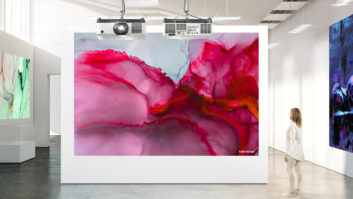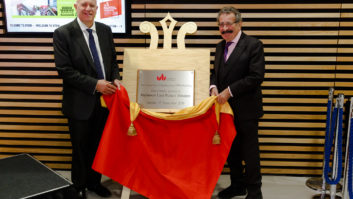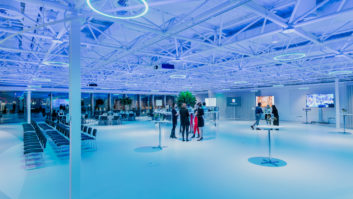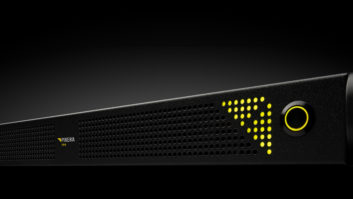The past year continued to see major developments in AV technology across multiple markets. From entertainment and retail to corporate, education and healthcare, the experiences now made possible with AV are transforming how we engage, collaborate, communicate and connect with others around us, whether at a live event or in a meeting room.
With the demands of the experience-loving Gen Z weighing heavily in every industry, this has had a clear impact on the AV sector too. The stand-out shift is the ways in which AV technology developments, regardless of the industry they are being deployed in, now have a renewed focus on delivering more meaningful and impactful experiences.
 ISE 2024 was proof of that. The show was filled with large-scale ultra-high-resolution displays, transparent displays blurring digital and real-world elements and touch-free technology that can benefit sectors like healthcare where cleanliness and convenience is prioritised.
ISE 2024 was proof of that. The show was filled with large-scale ultra-high-resolution displays, transparent displays blurring digital and real-world elements and touch-free technology that can benefit sectors like healthcare where cleanliness and convenience is prioritised.
Other highlights included advances in spatial audio, immersive technologies, interactive digital signage and remote management systems, seemingly designed with the new era of knowledge-workers in mind. All these developments were marked by an enhanced level of interactivity and dynamism that clearly fostered deeper experiences for all.
Universal prioritisation of the experience
In healthcare, AV solutions are being used to enhance communication and accessibility, such as digital signage to guide patients through hospitals and advanced audio systems to ensure clear communication in busy environments like operating rooms or large lecture halls for medical training.
Corporate environments are leveraging AV technology to improve workplace efficiency and engagement. High-quality video conferencing systems and collaborative tools are enabling hybrid teams to connect seamlessly, while large-scale display screens in boardrooms are helping to deliver more impactful presentations and discussions.
In education, interactive whiteboards and projection systems are modernising the classroom, making lessons more engaging and easier to follow. Lecture capture systems are also enabling students to revisit key concepts at their own pace, ensuring no one is left behind.
These practical applications of AV technology are helping industries adapt to the demand for experiences that are not just functional but also leave a lasting impression, enhancing the way we work, learn, and care for others.
Growth of the experience economy and the role of immersive technology
With audiences seeking more memorable and emotionally resonant experiences, 2024 has already seen more brands adapt seemingly traditional technologies in inventive ways that allow them to deliver fewer passive experiences and more participatory and personalised ones. In 2025, the experience economy will continue to be a key area of growth as businesses adapt to suit experiential demand.
Immersive technology, including virtual reality (VR) and augmented reality (AR), and holographic technology will further revolutionise how we engage and interact. The technology will burst through its perceived novelty and become a use-case for more business-led applications.
In entertainment and gaming, these technologies are often coupled with cutting-edge spatial audio to deliver an even more realistic experience recreationally. But, outside of this, VR is also increasingly being used to enhance applications like training and collaboration in a hybrid working world.
Similarly, AR is bringing education to life by integrating the technology as an additional layer to existing installations or museums. It’s also transforming the shopping experience in the retail sector to allow customers to interact with products in new ways, such as in-store try-ons, helping to seamlessly bridge the gap between online and in-store shopping.
Holographic displays offer 3D projections without the need for wearable hardware. The technology is already being used in live events to allow audiences to experience music performances from iconic late artists, but in the corporate, education and healthcare sectors it is beginning to make a huge impact. For example, the technology can enable more creative product showcases, deliver an innovative way to include speakers in a presentation without them being present or 3D mapping to improve surgery performance.
In the future, the technology can transform virtual meetings with real-time collaboration and add more interactivity and immersion to learning environments. VR, AR and holograms are key technologies that are enabling experiences to be enhanced by improving user engagement across multiple sectors.
The impact of intelligent technology on user engagement
Immersive technology has become commonplace throughout 2024. And 2025 will see these experiences become more personalised and increasingly sophisticated. Key to this is artificial intelligence (AI) and machine learning (ML). The continued development and integration of these technologies within AV solutions will ensure that users and customers are more engaged with the experiences brands are offering.
In the retail sector, AI can be used for targeted digital signage advertisements, personalisation of content for users based on their preferences and real-time insights. AV systems that use ML algorithms for data analysis means retailers can evaluate content effectiveness and consumer behaviour more accurately to influence purchasing decisions. When these intelligent technologies are combined with other advanced AV technology, such as dynamic digital displays and 8K resolution screens with photorealistic visuals, retailers can offer customers added immersive and interactive experiences with their brand.
In the corporate and education sectors, AI-driven intelligent room systems allow organisations to turn meeting rooms or lecture halls into highly intuitive spaces. PTZ cameras, for example, use visual AI to automatically track and frame an individual in a room during a virtual meeting enhancing the experience for employees and students alike. The growing trend toward intuitive and personalised experiences will drive further demand for advanced AV solutions to meet individual preferences.
5G connectivity continues to play a crucial role
Another major trend that will contribute to the growth of the experience sector in AV is the rollout of 5G technology. Its high speeds and ultra-low latency offerings are set to improve the performance of AV systems. Better connectivity will have a positive impact on user experiences across a range of settings. For example, audiences can experience immersive VR entertainment or real-time video streaming without the lag. In retail, where digital signage is vital to branding and communication, retailers are empowered to remotely control all content from one central location.
As AV continues to merge with other sectors, technologies are becoming less confined to specific markets and are finding new uses. The growth of the experience economy will fuel advancements in technology focused on improving user engagement. These developments will also influence other sectors as it continues to find new ways to immerse and interact with audiences. For 2025 and beyond, the focus isn’t just on shared experiences but how businesses can integrate the right technologies to meet individual needs.







